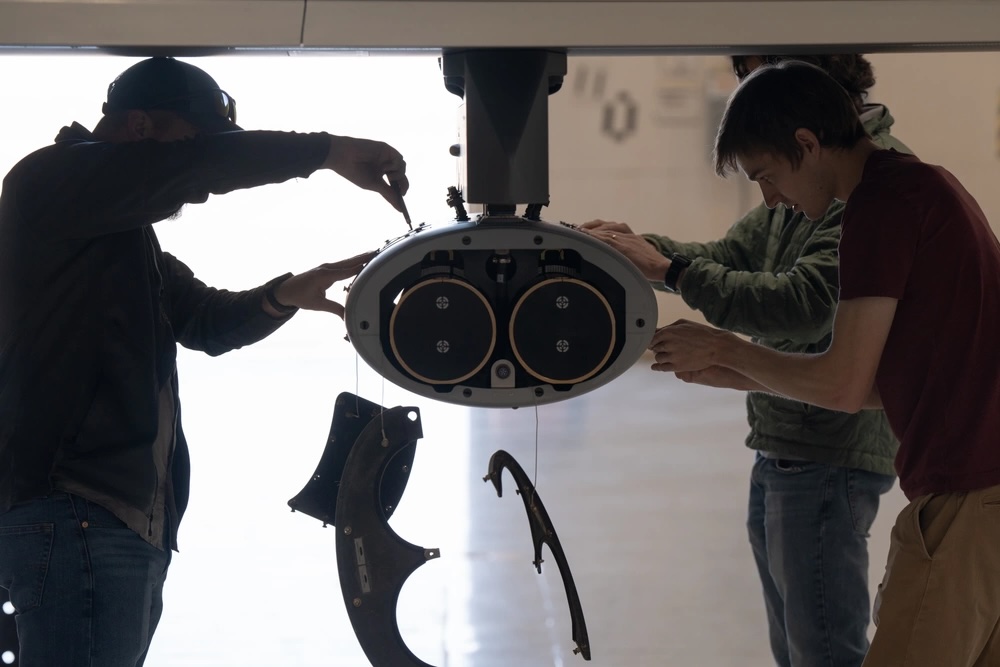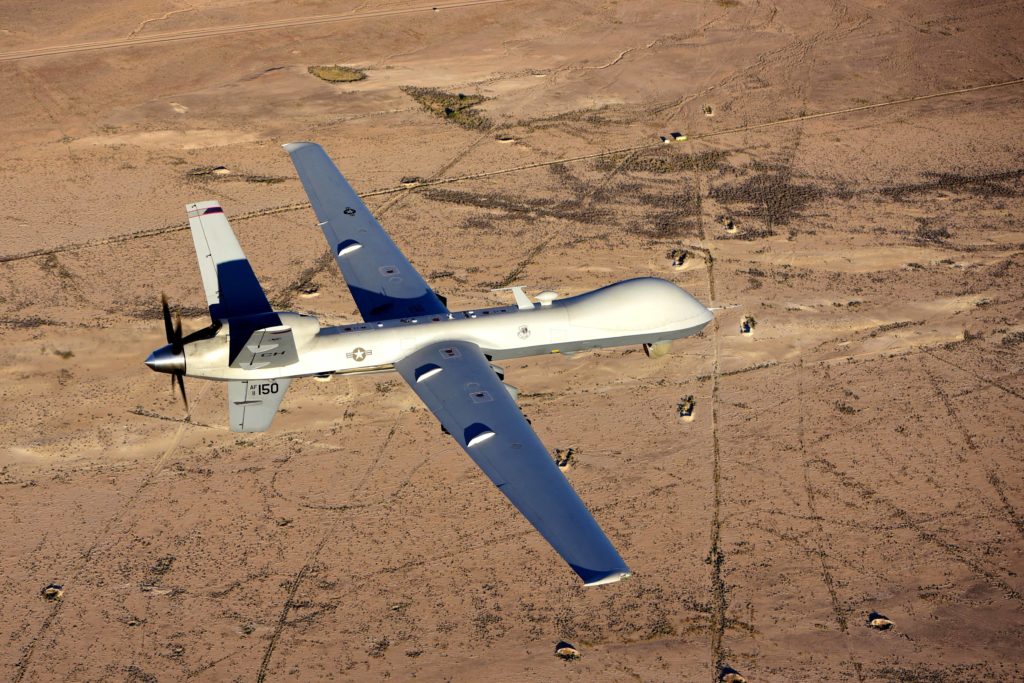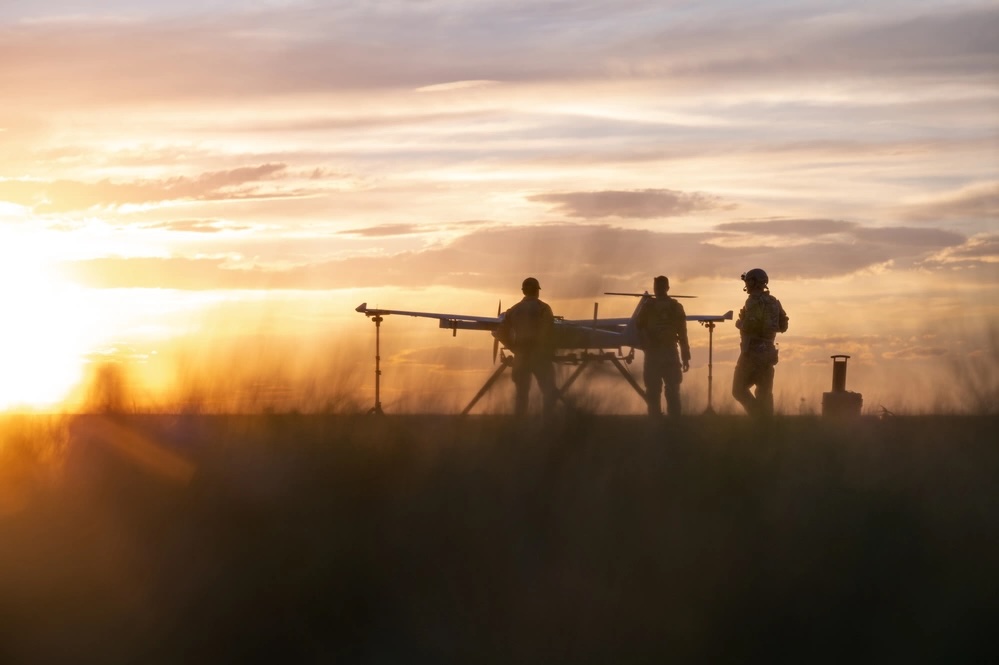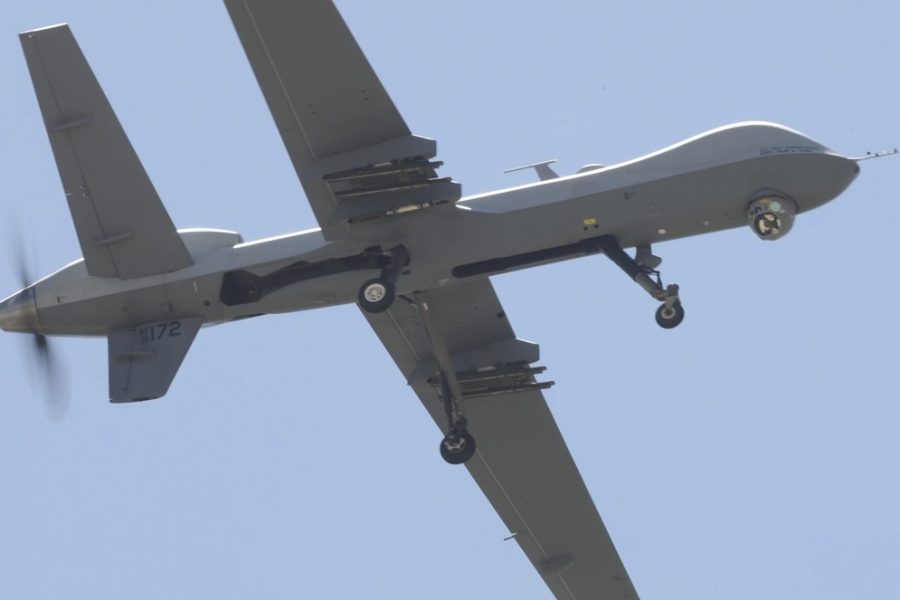A single crew controlled three MQ-9 drones in a major step forward for Air Force Special Operations Command’s preparations to fly Reapers in a possible near-peer conflict. On Dec. 6, a standard crew of a pilot and sensor operator with the 27th Special Operations Wing at Cannon Air Force Base, N.M., flew three Reapers for about 30 minutes.
Six days later, the 27th SOW demonstrated another new capability by air-launching two smaller drones from an MQ-9 and controlling them with an additional crew member, a key benchmark for AFSOC’s goal to eventually use the Reaper as a “capital ship” from which smaller drones can establish a sensor grid or a communications pathway for other troops.
“Demonstrations at this level are not easy,” Maj. Lindsay Scott, chief of Autonomous Capabilities Development at AFSOC, told Air & Space Forces Magazine. “This was the first time putting this system in the hands of the operators and we were able to accomplish many of our objectives.”

The flights last month were part of a larger AFSOC plan to ready its fleet of MQ-9s, which for the past several decades were used primarily for intelligence, surveillance, and reconnaissance (ISR) and strike operations in theaters with relatively few threats to aircraft or communications. That could change as the Air Force prepares for possible conflicts against more technologically advanced adversaries such as China.
AFSOC’s plan is called Adaptive Airborne Enterprise (A2E), where MQ-9s would become mobile control centers for a network of small drones or other systems which could form an “expansive sensing grid” to find targets or create a communications pathway “for our special operations forces that will be in the deep battlespace,” AFSOC boss Lt. Gen. Tony D. Bauernfeind told reporters in September.
AFSOC wants its crews to be able to fly multiple MQ-9s and other uncrewed aircraft systems (UAS) with less equipment and more flexibility, which would allow them to perform more missions in more contested environments than ever before. Future AFSOC MQ-9 crews may be able to launch multiple small UASs that can serve as standoff sensor systems, loitering munitions, or data transport nodes for mesh communication networks, a 27th SOW press release explained.

“Adaptive Airborne Enterprise is vital to thickening the Joint Force kill web throughout the spectrum of conflict and continues to be a top AFSOC acquisition priority,” a Cannon Air Force Base spokesperson said.
There are five phases to A2E:
- Phase One: AFSOC transitions from the older ground control stations for piloting MQ-9s to a lighter, more modern system that allows crews to operate different kinds of aircraft “from the back of an AC-130, home station, or even urban environments,” the press release explained.
- Phase Two: Single crews fly multiple MQ-9s rather than the historical standard of one aircraft per crew. “We’re moving towards a crew or a single operator controlling multiple aircraft,” said Maj. Joshua Radford, director of the RPA Operations Center at the 56th Special Ops Intel Squadron. “And it doesn’t necessarily need to be the same platform.”
- Phase Three: Single crews control several types of UASs, from small systems such as the RQ-11B Raven to the larger strategic assets such as the Reaper.
- Phase Four: Single crews control formations of UASs out of mobile or austere locations, which would pave the way for the final phase.
- Phase Five: Create “new effects-based ISR units,” the press release explained. “These units could be comprised of UASs, forward deployed ground forces, cyber operators, and space operators that can collaboratively employ UAS capabilities in permissive, contested, or denied environments.”

The first three phases are already underway. During the tests in December, the MQ-9 crew used a new common control interface called the AFSOC RPA Control Suite (ARCS), which allowed a single crew to control multiple platforms. They also showed they could attach, air-launch, and control several small UASs from an MQ-9. In this case, the smaller drones were two Altius-600s, a modular aircraft that can serve as an ISR platform, a communications relay, or a loitering munition, in addition to a long list of other roles.
During the demonstration of three MQ-9s, the aircraft were launched and landed using the typical MQ-9 ground control stations, Scott explained. In between, the aircrew handed off control to an ARCS system, which was used to fly the three Reapers for about 30 minutes.
“The objectives for the demonstration were to perform a handover from a GCS to ARCS and to conduct basic aircraft and payload control to mimic a typical intelligence, surveillance, and reconnaissance mission,” she said. “After gaining each aircraft, the aircrew performed basic maneuvering by moving the aircraft loiters and performed a climb and descent.”
AFSOC is not the only organization experimenting with new ways to fly the Reaper. In July, student operators at Holloman Air Force Base, N.M. launched, flew, and landed two MQ-9s at Grand Forks Air Force Base, N.M. solely via satellite connections. Usually Reapers are flown by operators in faraway ground control stations but launched and recovered by Airmen closer to the runway, but an autopilot function known as the Automatic Takeoff and Landing capability allows one crew to perform the entire operation, which cuts down on the footprint required for MQ-9 operations.
“There’s this monumental change in mindset, that I don’t need to pack all this stuff up and go,” Lt. Col. Michael Chmielewski, then-commander of the 556th Test and Evaluation Squadron, said in 2022. “I can go places just with a very small piece of maintenance equipment and less amount of people.”
AFSOC also wants to make operating unmanned systems less manpower-intensive.
“Our ISR infrastructure, specifically our MQ-9 architecture, has really been the same architecture that we have seen since the 1990s,” Bauernfeind told reporters in September. “It takes over 150 personnel or Airmen to maintain a single MQ-9 orbit. That doesn’t seem too unmanned to me.”

Still, it could be a long road getting to more efficient, more capable operations.
“A2E is a complex system and requires extensive planning, organization, resources, engineering, and networking to test out new capabilities and integrate different components to work together,” Scott said. “The key takeaway was the importance of the integrated team of military, civilians, contractors, and industry partners to identify challenges, work solutions and better inform requirements for the future of the system.”
Upcoming demonstrations this summer will “improve control of multiple aircraft and payloads from one station,” she added. “The goal is to provide multiple platform and payload control through ARCS, incorporate autonomous behaviors and transfer control to a ground party.”
Farther out, artificial intelligence could help AFSOC crews fly a wide range of drones over a large area in unfriendly skies.
“Can we establish a network that goes 5 miles, 50 miles, 500 miles?” Bauernfeind said. “I don’t know, we have to work the physics and the tactics, techniques, and procedures to find out how far we can push these networks out that will then give us that grid that we need to support the joint force.”
